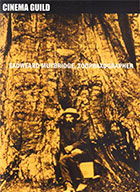
Eadweard Muybridge, Zoopraxographer 2014
Distributed by Cinema Guild, 115 West 30th Street, Suite 800, New York, NY 10001; 212-685-6242
Producer n/a
Directed by Thom Andersen
DVD, color and b&w, 60 min.
Sr. High - General Adult
Film, Photography, Art History
Date Entered: 04/24/2015
Reviewed by Oksana Dykyj, Head, Visual Media Resources, Concordia University, MontrealThom Andersen’s Eadweard Muybridge, Zoopraxographer has been newly restored and digitally remastered by the UCLA Film and Television Archive. According to Ross Lipman, who was in charge of the restoration, the source material was Thom Andersen’s original 16mm color reversal a/b rolls, which had suffered from color fading. The color was subsequently restored via a variety of both photochemical and digital methods. Almost forty years since it was first completed as a Master’s thesis, the film can now be viewed as originally intended. As someone who has seen her share of Master’s theses, this film is far from what we have come to think of as a “student” film. This is a serious work of art that also doubles as an incredibly comprehensive documentary about Muybridge, whose contributions to the development of motion pictures now require a more sustained re-examination. The film is a polished and thoroughly executed account of the life and preoccupations of this somewhat enigmatic photographer. The care with which Andersen executed the animation of the photographs to demonstrate Muybridge’s work, as well as his methodical and painstaking demonstrations of Muybridge’s photographic experiments, establish the basis for his own personal aesthetic in future films. He is a filmmaker who elevates the practice of documentary to an art form.
Narrated by actor Dean Stockwell, here taking on the voice of omniscience, the film maps out and documents Muybridge’s photographic work. It discusses his early experiments with stereoscopic photography and delves into the backgrounds of the subjects photographed. With the help of Morgan Fisher, Andersen re-photographed and then animated more than 3,000 of Muybridge’s sequential images, thus connecting his work to the history of Western representation and contextualizing his importance in the development of moving image history. This very highly recommended documentary ought to be in all academic and public library collections dealing with art history, photography history and film history.